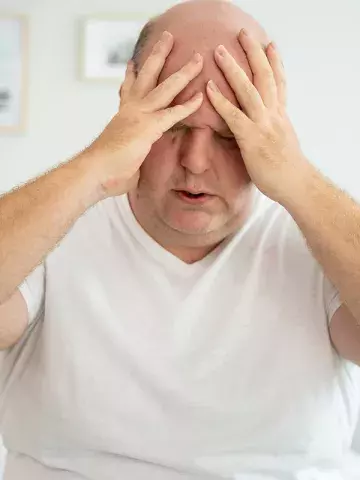Tirzepatide benefits in patients with sleep apnoea and obesity
By Rebecca Jenkins
The type 2 diabetes medication tirzepatide reduces sleep disturbance among patients with moderate-to-severe obstructive sleep apnoea (OSA) and obesity, two large trials suggest.
OSA therapy had historically focused on continuous-positive airway pressure (CPAP) treatment, but varying levels of patient adherence impacted the therapy’s effectiveness, researchers wrote in The New England Journal of Medicine.
Excess adiposity was a major reversible aetiologic risk factor for OSA and its complications, they noted, therefore a pharmacological agent that targeted obesity and its downstream effects on OSA might facilitate a more holistic approach to OSA.
The two industry-sponsored phase 3, double-blind randomised controlled SURMOUNT-OSA trials involved patients with moderate-to-severe sleep apnoea and obesity and were conducted at 60 sites in nine countries, with the first trial enrolling people who were not receiving CPAP therapy and the second involving people who were using CPAP.
A total of 469 participants were assigned in a 1:1 ratio to receive either the maximum tolerated dose of the glucose dependent insulinotropic polypeptide (GIP) receptor and glucagon-like peptide-1 (GLP-1) receptor agonist tirzepatide (10mg or 15mg) or placebo for 52 weeks.
At baseline in trial 1, the mean apnoea-hypopnoea index (AHI, the number of apnoea and hypopnoeas during an hour of sleep) was 51.5 events/hour, which at 52 weeks reduced by 25.3 events/hour among patients taking tirzepatide and 5.3 events/hour for placebo, with an estimated treatment difference of −20 events/hour.
In trial 2, where patients were receiving CPAP therapy, the baseline AHI was 49.5 events/hour, which dropped by 29.3 events/hour with tirzepatide and by 5.5 events/hour with placebo, an estimated treatment different of −23.8 events/hour.
Treatment with tirzepatide also reduced body weight, hypoxic burden, high-sensitivity C-reactive protein concentration and systolic blood pressure and improved sleep-related patient reported outcomes, the researchers said.
Study coauthor Professor Ron Grunstein, AM, Professor of Sleep Medicine and NHMRC Senior Principal Research Fellow, Sleep and Circadian Group, Woolcock Institute of Medical Research, Macquarie University, Sydney, and Senior Specialist Physician, The University of Sydney and Royal Prince Alfred Hospital, Sydney, said there was an interest in a pharmacological treatment for OSA due to the limitations with mechanical therapy.
‘CPAP is essentially a mask and a machine, and it is not an easy therapy for patients to use; a lot of people either don’t use it or use it sparingly,’ he told Medicine Today.
Professor Grunstein said the results achieved in the trials were impressive, noting the patient population had quite severe sleep apnoea and severe obesity (an average body mass index of 39.1 kg/m2 in trial 1, and 38.7kg/m2 in trial 2). He also highlighted that the investigators had slowly introduced patients to the full dose of tirzepatide, not reaching the full dose until six months to give patients time to adjust and minimise side effects.
It was likely the drug could be particularly useful in patients with severe mental illness and sleep disturbances, who have gained weight after taking antipsychotic medications, Professor Grunstein added, and there were proposals to carry out a study in this patient population in Australia.
‘In our experience, a lot of these patients have sleep apnoea, so I would think that that is a particular target group who should be using these medications,’ he said.


